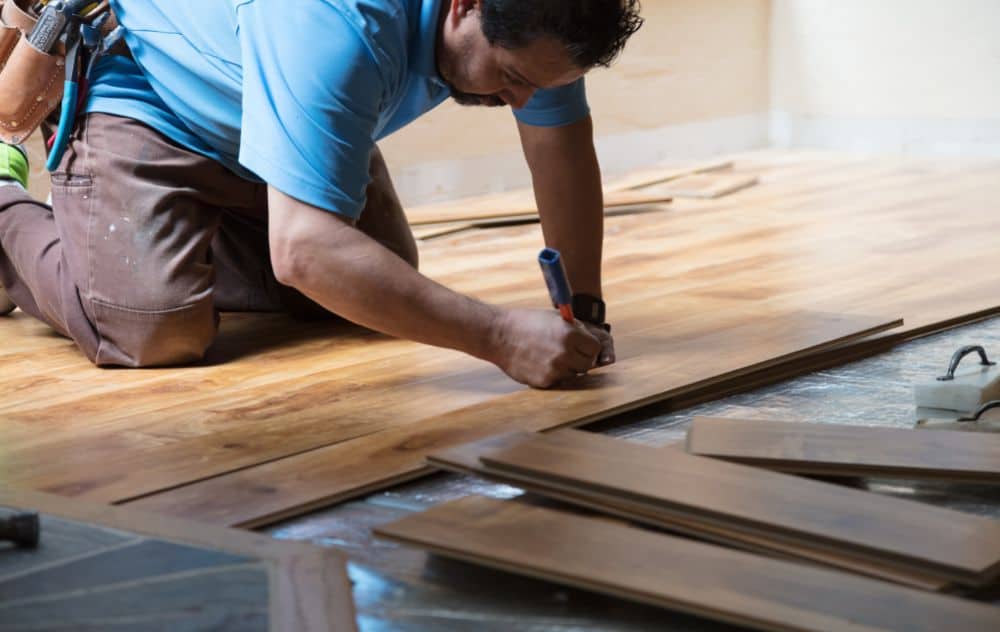A trailer can be an excellent investment, but wear and tear can take their toll over time, potentially leading to soft spots in the floor. These soft spots can be frustrating and unsafe if left unattended. The good news is that they can often be repaired easily with a bit of knowledge and preparation. In this comprehensive guide, we will delve into the causes of soft spots, what warning signs to look for, and step-by-step instructions for repairing them.

Image: mobilehomelife.org
Understanding Soft Spots in Trailer Floors
A soft spot in a trailer floor is a localized area where the floor has weakened, leading to a soft or spongy feel underfoot. These soft spots can range in severity from minor indentations to significant sagging, and if ignored, they can lead to structural damage to the trailer. Understanding why these soft spots occur is crucial for preventing and addressing them effectively.
Causes of Soft Spots
Several factors can contribute to the development of soft spots in trailer floors:
- Water damage: Moisture is the primary culprit behind soft spots. Water can penetrate the floor through damaged seals, leaks in the roof or walls, or condensation. Over time, the moisture can weaken the subfloor, plywood, or carpeting, leading to soft spots.
- Excessive weight: Placing heavy objects in a concentrated area of the floor can put excessive pressure on the substructure, causing it to weaken and develop soft spots.
- Wear and tear: As you use your trailer, the floor will naturally experience wear and tear. Constant foot traffic, moving furniture, or hauling heavy equipment can damage the floor surface and underlying layers.
- Poor construction: In some cases, soft spots can be traced back to poor construction practices. Inadequate support beams or improperly installed flooring can create weak points that are prone to developing soft spots.
Signs of Soft Spots
It’s essential to be able to recognize the warning signs of soft spots to address them promptly:
- Sinking feeling: Stepping on a soft spot will feel like you are sinking into the floor.
- Visible damage: Look for any cracks, holes, or indentations in the floor surface.
- Squeaking or creaking: As you walk on a soft spot, you may hear squeaking or creaking sounds.
- Pooling water: If water has penetrated the floor and caused a soft spot, you may notice pooling water on the surface.

Image: www.mobilehomegone.com
Repairing Soft Spots in Trailer Floors
Properly repairing soft spots is crucial to maintain the integrity and safety of your trailer. Here’s a step-by-step guide to help you fix them:
Materials You Will Need
- Safety glasses
- Mask
- Gloves
- Plywood (minimum 1/2-inch thickness)
- Drywall screws (2-inch length)
- Construction adhesive
- Wood filler
- Caulking gun
- Caulk
- Jigsaw or circular saw
- Drill
- Screwdriver
- Hammer
Safety First
Before beginning any repairs, ensure you have adequate safety gear, including safety glasses, a mask, and gloves. Working with sawdust and chemicals can be hazardous, so protecting yourself is paramount.
Assess the Damage
Determine the extent of the soft spot by carefully inspecting the affected area. Identify the size, shape, and depth of the damaged area. This information will help you determine the necessary repairs.
Remove Damaged Material
Using a jigsaw or circular saw, carefully cut out the damaged area of the floor. Ensure you cut square and straight edges to provide a solid base for the repair. Remove all damaged material, including any wet or rotten wood.
Install New Plywood
Cut a piece of plywood to fit the hole you cut out. The plywood should be at least 1/2-inch thick to provide adequate support. Apply a generous layer of construction adhesive to the edges of the plywood and carefully insert it into the hole. Secure the plywood with 2-inch drywall screws, spacing them evenly around the perimeter.
Fill Gaps and Caulking
If there are any gaps around the edges of the new plywood, fill them with wood filler. Once the wood filler has dried, apply a bead of caulk around the perimeter of the repair to seal it and prevent moisture from entering.
Allow Time to Dry
Give the repaired area sufficient time to dry completely before using the floor. This will allow the adhesive and caulk to cure properly, ensuring a strong and lasting repair.
How To Fix Soft Spots In Trailer Floor
https://youtube.com/watch?v=W-piD4gf-ko
Preventing Future Soft Spots
Preventing future soft spots is just as important as repairing existing ones. Here are some practical tips:
- Keep your trailer dry: Regularly inspect your trailer for leaks and address them promptly. Ensure seals around windows, doors, and the roof are intact.
- Avoid overloading: Distribute weight evenly throughout the floor and avoid placing heavy objects in concentrated areas.
- Use mats and rugs: Place mats or rugs in high-traffic areas to protect the floor from wear and tear.
- Clean regularly: Sweep or vacuum your trailer regularly to remove dirt and debris that can scratch or damage the floor.
By following these tips, you can minimize the likelihood of soft spots forming in your trailer floor, ensuring a safe and comfortable travel experience for years to come.